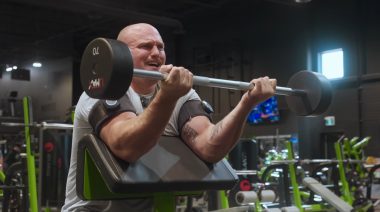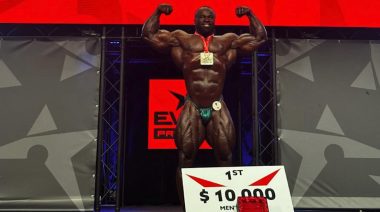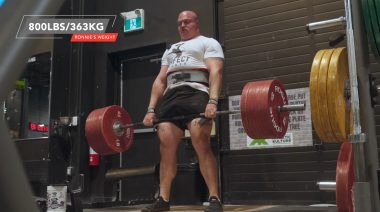Building strength and muscle is what drives many people to start lifting weights in the first place, so why not train for the best of both worlds? Instead of choosing between sheer power and strength or a lean and muscular physique, find a balanced way to achieve both. Powerlifting plus bodybuilding equals powerbuilding.
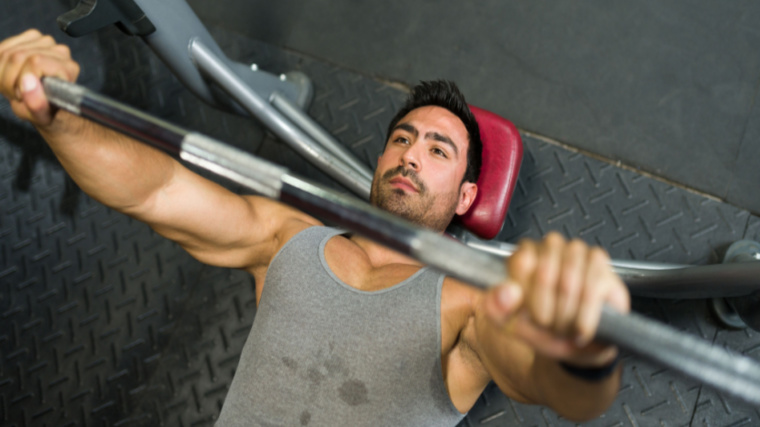
Although powerbuilding is often considered a specific style of training, it’s really just an overall structure given to any training plan. And it’s a structure that many experienced lifters were doing even before it was given a name.
While there’s no reason to be dogmatic, here are some basic guidelines that can help you decide where to put your focus, what to include and what to leave out, and how to best organize your training to pack on size and strength.
- What is Powerbuilding?
- Who Should Use Powerbuilding?
- Why Train for Powerbuilding?
- How to Plan a Powerbuilding Routine?
- Common Powerbuilding Mistakes
- Sample Powerbuilding Program
What is Powerbuilding?
Training for powerbuilding means that you focus on increasing strength in big, compound (multi-joint) lifts while also building muscle through more classic bodybuilding-type training with isolation (single-joint) exercises and exercise variations, also called accessory movements.
One example would be starting a workout with sets of deadlifts, followed by accessory exercises concentrated on individual muscle groups such as the back and hamstrings. The main compound lift would be done for lower reps with heavier weights to develop strength and power.
The accessory exercises are done with relatively higher rep ranges in order to develop individual muscles while reducing wear and tear on the joint. That can include anything from single-joint exercises like biceps curls to multi-joint movements like split squats or pull-ups.
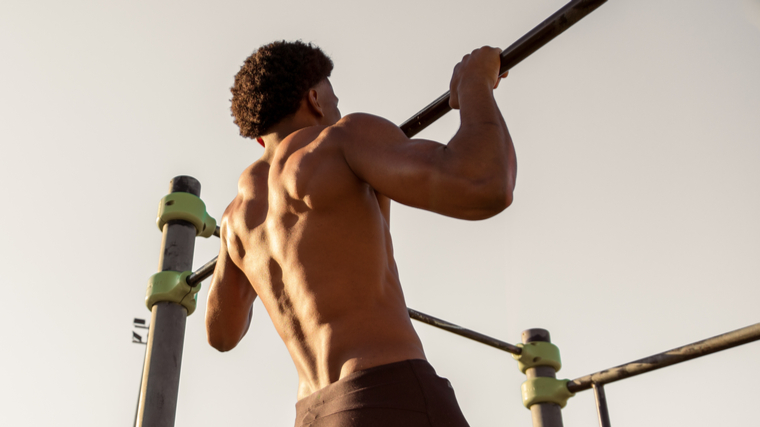
An upside to powerbuilding is that you can choose what to prioritize for specific goals. If you eventually decide to enter a powerlifting competition, for example, you could allocate more time to training heavy with the big three powerlifts — back squat, bench press, and deadlift — and minimize some of the bodybuilding work.
Or, when beach season approaches, you might keep the heavy barbell lifts to a minimum and spend most of your training doing muscle-building accessory exercises to build a serious physique while remaining relatively strong.
While powerbuilding gives you flexibility in exercise choice, there are some things to keep in mind for the best results.
Who Should Use Powerbuilding
Powerbuilding is for those who don’t have one singular physique or performance focus, but instead want to be physically well-balanced.
If you want to be strong, muscular, and fit, there’s no reason to get stuck working towards some grandiose weight in a barbell lift, reaching a specific body fat percentage number, or breaking a certain time for an endurance workout.
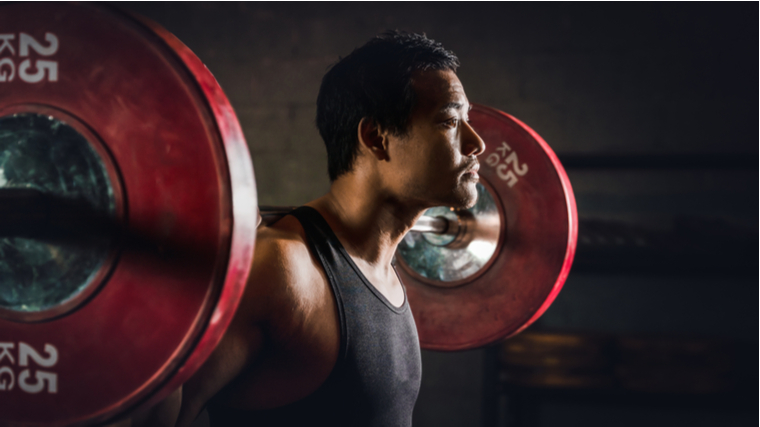
That’s not to say you won’t still set PRs (personal records), build endurance, and drastically improve your body composition with a more general training powerbuilding approach.
You may not break state lifting records or be shredded enough to step on a bodybuilding stage, but you can still end up stronger and more muscular than people who put all of their training eggs in a single basket.
Powerbuilding training can also be useful for people who compete in other sports or physical hobbies. When you’re approaching a competition, strength and conditioning training does need to be tailored to your specific sport or activity, especially when you’re competing at a very high level.
As long as you’re not in a competitive season, powerbuilding can be a great way to build a broad foundation for novice athletes and it can help experienced athletes remain well-rounded.
Powerbuilding for New Lifters
It’s great that powerlifting-inspired, strength-focused training has become popular in recent years. However, too many people with no lifting background dive headfirst into heavy training after seeing it for the first time.
While powerlifting can build an excellent level of upper and lower-body strength, beginners need to build a foundation using more variety than this type of specialized training can provide. Powerbuilding training is a better alternative for beginners because it builds a much broader base by developing more attributes with more exercise variety.
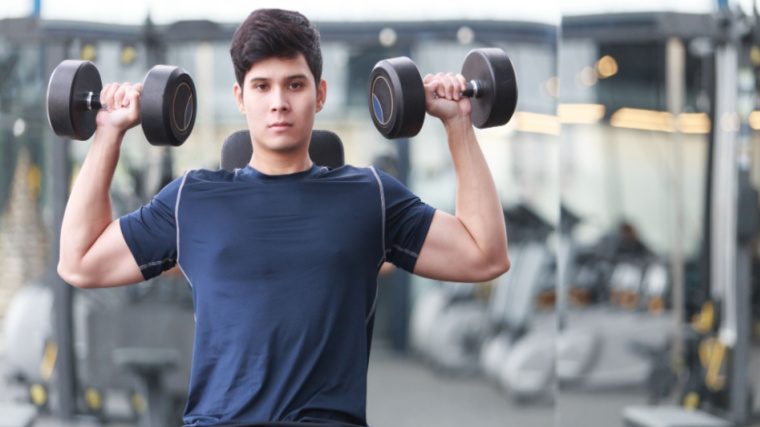
A beginner starting with a broad base will be in a better position to build on. With powerbuilding, you can steadily improve in big barbell lifts, similar to powerlifting-based training. Those barbell lifts can be markers for you to track your progress — not just in strength, but also in movement quality. Your technique will improve as you progress.
You also have more freedom when choosing different exercises, variations, and training methods on a powerbuilding program. Powerlifting is exclusively focused on moving the most total weight in the back squat, flat bench press, and deadlift. Powerbuilding lets you focus on different barbell lifts while performing a wide variety of isolation exercises. In the long-term, this leads to better balance, proportion, and overall healthy function throughout your body.
Why Train for Powerbuilding
A Powerbuilding routine is excellent not only for building strength and muscle, but also for developing work capacity and resilience toward injury. This is primarily because powerbuilding allows flexibility to use a variety of exercises and training methods, instead of a relatively smaller handful of goal-specific exercises or methods.
View this post on Instagram
Muscles grow bigger and stronger more quickly than the connective tissue that attaches those muscles to bones. If your training routine is excessively focused on building strength, like many powerlifting-based programs, you’re on a potentially dangerous path.
The disproportionate increase in muscular strength may create a condition where your muscles exert levels of force that your connective tissues can’t support. That can lead to the type of injury that keeps nagging for years.
Powerbuilding programs make it simple to incorporate moderate-to-high rep accessory exercises which increase blood supply and metabolic growth factors to tendons and ligaments. This type of training makes the connective tissues thicker and stronger, while increasing the muscles’ ability to withstand fatigue and do more work.
Powerbuilding routines also leave room for hybrid training methods which build muscle and aerobic capacity together, such as “tempo interval circuits” — alternating 20 to 45 seconds of steady state activity (rowing, stationary bike riding, sled dragging, etc.) with 10 to 15 reps of an accessory exercise, repeated for a total of 20 to 60 minutes.
These methods can all be included in powerbuilding programs to build a more well-rounded, highly capable body that’s more resistant to injury. You can still decide to specialize with powerlifting or bodybuilding-focused training later, if it suits your specific goal.
How to Plan a Powerbuilding Routine
While you do have a lot of flexibility when arranging your powerbuilding training plan, there are some important things to consider when designing a program.
Choose Your Main Lifts
First, decide which compound lifts to prioritize. You can use the classic back squat, flat bench press, and deadlift, or you can substitute similar alternatives. For example, you could trade the bench press for the overhead press if overhead strength appeals to you.
To focus on leg strength, you may want to include both the back squat and front squat while leaving out the deadlift for a few months. However, using “overlapping” exercises or very similar movements will require extra attention to planning, explained later.
There are no strict rules regarding which exercises to include, just pick what you like and stick with it. You can choose whatever big compound lifts you prefer, and you can even change them over time.
However, because the main lift is strength-focused, it should be a movement which allows the greatest potential weight to be lifted. This will almost always be a barbell exercise. Plan to use three to five sets of three to six reps with a challenging weight.
Know Your Training Split
Next, decide what order you’ll train your lifts and muscle groups. You can do this by following a push/pull split, an upper/lower split, or a muscle group split.
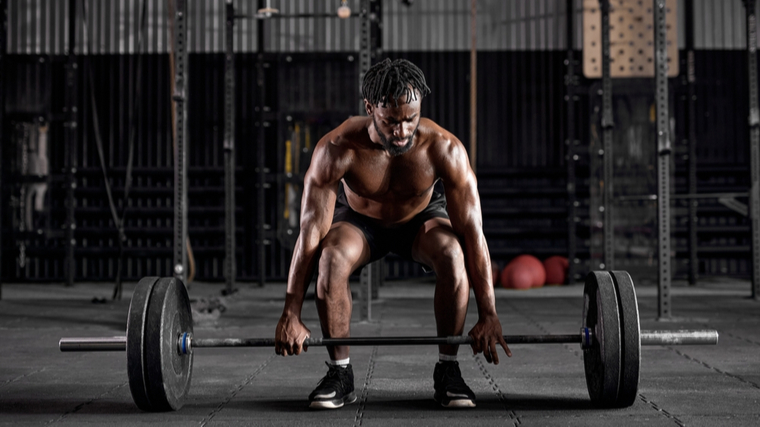
Push/Pull Split: The push/pull split alternates training days focused on “pushing” muscles and movements (including squats and squat variations, chest and shoulder training, and triceps work) with days focused on “pulling” muscles and movements (including deadlifts and deadlift variations, back exercises like rows and pulldowns, and biceps training).
The most common way to program a push/pull split is to pair a pushing movement main lift with accessory pushing exercises. For example, a workout could begin with heavy squats, followed up with upper and lower-body pushing accessory exercises including hack squats, leg extensions, overhead dumbbell pressing, and skull crushers.
If you’re training with more than one push (or pull) workout per week, you might focus the accessory work to only the muscles used in the main lift. For example, heavy front squats followed by the leg press, Bulgarian split squat, standing calf raise, and ab training.
Upper/Lower Split: This is exactly what it sounds like — each training day is devoted to either upper body or lower body exercises.
On day one, you might bench press and then do the dumbbell overhead press, pulldowns, cable rows, and triceps extensions. Day two could include the deadlift, lunges, hamstring curls, and calf raises. While day three might focus on the barbell row, chin-ups, chest dips, incline pressing, and biceps curls.
This approach can be manipulated to improve overall recovery time by adding rest days to extend the time between workouts. This makes it a very suitable choice for older lifters who may need to carefully monitor the weekly wear and tear on their body.
Muscle Group Split: This is a classic “body part split” seen in most bodybuilding programs, with each training day focused on one or two specific muscle groups. However, the main compound lifts still focus on building strength with that body part as the primary working muscle.
Training days typically work around the chest, back, shoulders, arms (sometimes broken down into a biceps day and a triceps day), and legs. “Leg day” may also be separated into one quadriceps day (with squats) and one hamstring day (with deadlifts).
For example, you might start “quadriceps day” with front squats, and then maximize muscle growth with accessory exercises that specifically work the leg muscles used in a squat — including lunges and leg extensions.
On shoulder day, you may use the push press as a main lift, followed by dumbbell overhead pressing, lateral raises, rear delt flyes, triceps pushdowns.
Choose Your Accessory Exercises
Once you’ve selected your main lifts and training split, you’ll know which accessory movements can be plugged into each day.
Accessory movements should be chosen to build size in muscles that need attention and are appropriate for each training day. If you’re following a push/pull split, you wouldn’t perform leg curls as an accessory movement after bench press; they’re different types of movements and the hamstrings aren’t recruited when benching.
Don’t make the mistake of thinking accessory exercises are a lesser priority than your main lift. Accessory movements are primarily responsible for the “building” part of powerbuilding. They help you pack on size and support strength progression in the main lifts.
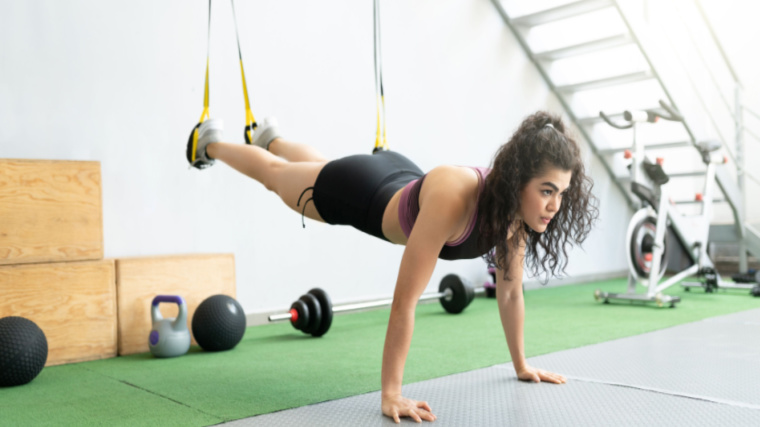
When it comes to accessory exercises, work for three to five sets of eight to 15 reps. You may want to include traditional isolation exercises like lateral raises or seated leg extensions, or variations of the main lift such as an incline bench press or dumbbell overhead press.
You could also use alternative exercises like kettlebell swings, farmer’s walks, or sled drags to build the size and conditioning you’re looking for. Accessory movements allow you to focus more on muscle growth than raw strength, so choose the movements based on your individual needs.
Determine Your Training Frequency
The last step to setting up your powerbuilding program is to decide how many days per week you’re going to train. Typically, the longer you’ve been training, the more volume of work you must do to continue to see progress.
This usually means more experienced lifters will need to train more days each week than when they first started. Someone who has been doing powerbuilding training for a year or less can often improve with only two to three workouts a week because the overall stimulus is still relatively new and their body responds well.
Lifters with more than two years experience will probably need to train three to five days per week to achieve the volume and intensity needed to continue seeing results. One or even two workouts per week couldn’t accommodate enough exercises with enough sets and reps, using enough weight, to trigger sufficient muscle and strength gains.
However, you can structure your week to make the most out of fewer training days. Yes, the longer you consistently train, the more work you will need to add overall. But if you appropriately pair your compound lifts and add accessory exercises that fill in any potential gaps, you don’t necessarily need to lift five days a week.
For example, you might follow an upper/lower split three days per week using the bench press and barbell row as main lifts on one upper body day, trap bar deadlifts and squats on a lower body day, and a shoulder press on the next training day.
Common Powerbuilding Mistakes
Powerbuilding can be a relatively straightforward approach to training — lift heavy and then lift a little lighter — but several common mistakes can limit your recovery and reduce results.
Poor Fatigue Management
One of the biggest issues to keep in mind is managing your fatigue throughout the week. You can do this by following a proper training split, grouping main lifts together, and organizing your split to reduce the total training days each week. Each of these were addressed in the planning section above.
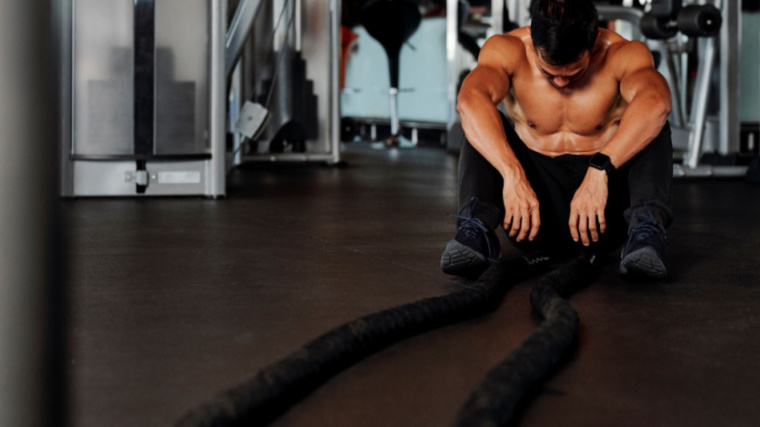
You can also manage nervous system fatigue by avoiding excessive overlap with similar exercises. If you were to design a powerbuilding routine with four different squat variations as the main lift four days in a row, you never give your nervous system or squatting muscles a chance to recover. You’ll likely burnout before seeing any significant results.
Instead, you might do back squats and squat cleans on day one, with Zercher squats and front squats on day three or four. This creates a structure that allows you time to recover from the physical and physiological stresses of squatting.
Yes, it may suck to do heavy cleans after heavy squats or front squats after heavy Zerchers, but your body will adapt because it’s given the chance to recover. In the end, the total training plan will be more productive and you will adapt and grow stronger from it.
Overemphasizing Main Lifts or De-emphasizing Accessory Work
Some lifters get so caught up in chasing heavy weights that they overlook accessory work. If they’re in a hurry on a given day, accessory movements might be performed haphazardly, with reduced effort, or even skipped entirely. That’s a one way ticket to plateau city, where strength stalls and muscles remain under-sized.
For optimal gains in both size and strength, the main lift and the accessories should be approached with balanced effort and enthusiasm. If you wouldn’t skip a set of heavy deadlifts, you shouldn’t consider skipping a set of pulldowns or lunges.
If the unexpected happens and you need to trim your time in the gym, don’t simply drop the accessory movements. Take the opportunity to dial up the intensity and use supersets to fit more training sets into a shorter amount of time.
Sample Powerbuilding Routine
Now that you have the general outline for how to structure your training, here’s a sample program putting it all into action.
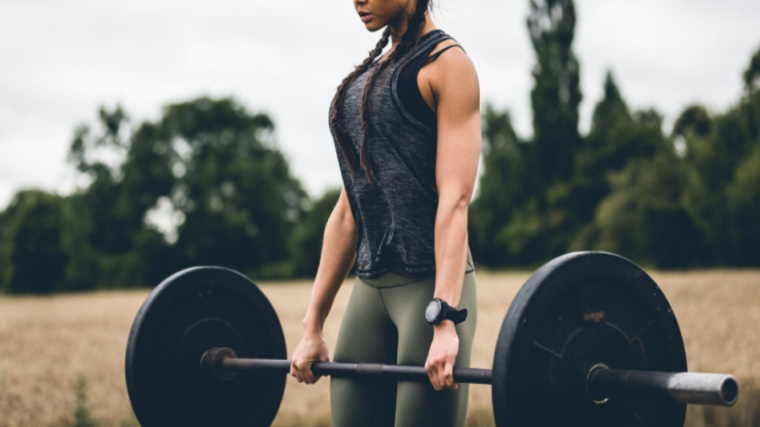
This adaptable template keeps the main lifts focused on building strength and includes alternative methods to increase work capacity and develop muscle.
Day One
- Back Squat: 4 x 5 (70% one-rep max)
- Overhead Press: 5 x 3 (75% one-rep max)
- Bulgarian Split Squat: 4×10 (each leg)
- Dumbbell Upright Row: 4×10 (superset with previous exercise)
Tempo Interval Circuit — Perform for 20 minutes:
- Sled Push: 30 seconds
- Feet-Elevated Push-up: 15 reps
- Sled Pull: 30 seconds
- Lat Pulldown: 10 reps
Day Two
- Deadlift: 2 x 3 (75% one-rep max), 2 x 3 (80% one-rep max)
- Landmine Row: 4 x 6 (each side)
- Romanian Deadlift: 4 x 6
- Cable Pull-Through: 3 x 15
- Two-Arm Dumbbell Row: 4 x 10 (superset with two following exercises)
- Cable Face Pull: 4 x 10
- Pallof Press: 4 x 6 (each side)
Day Three
- Bench Press: 4 x 5 (70% one-rep max)
- Front Squat: 4 x 3 (75% one-rep max)
- Goblet Squat: 4 x 8
- Lateral Lunge: 3 x 6 (each side)
- Dumbbell Floor Press: 3 x 12 (superset with previous exercise)
Accessory Circuit — As many sets as possible in eight minutes:
- Inverted Row: 6 reps
- Chest-Supported Front Raise: 8 reps
- Chest-Supported Rear Raise: 8 reps
- Seated Hammer Curl: 10 reps
- Overhead Dumbbell Triceps Extension: 8 reps
Building the Best of Both Worlds
Powerbuilding training is not only a great way to build a broad base for beginners, it’s one of the most efficient ways to structure your workouts for becoming stronger, more muscular, leaner, and capable of more than just picking up heavy things or flexing in poses. If you’re motivated to build a well-rounded body, spend some time powerbuilding.
Featured Image: Tom Yau / Shutterstock


